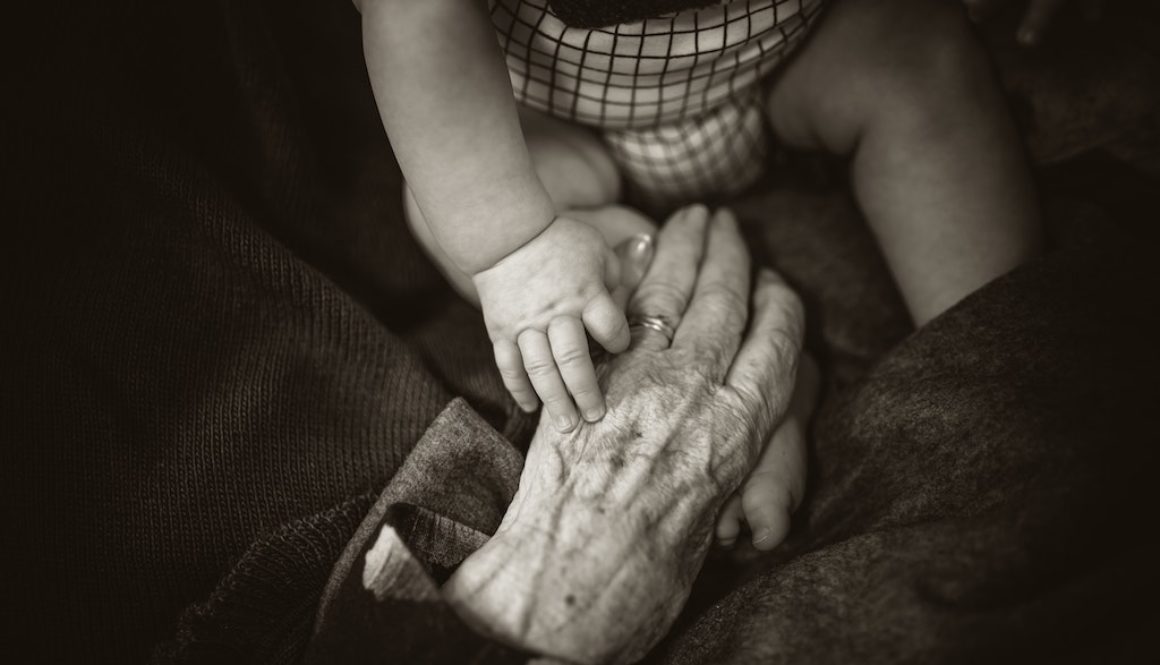Growing up, getting on, or leaving the countryside?
Education is seen as the driving force in helping unleash Britain’s potential and rebuild after COVID-19. The Department for Education (DfE) is aiming to drive economic recovery and level up opportunity for all by improving educational standards and giving children the best start in life. Will this boost opportunities for children and young people in rural areas? Jessica Sellick investigates.
………………………………………………………………………………………………..
In the UK no one law defines the age of a child. Under health and safety rules, a child is anyone who has not reached the minimum school leaving age and a young person is anyone under 18 years of age. The Children Act 1989 and 2004 and Children and Families Act 2014 combined this to define children and young people as up to age 18 years; with ‘vulnerable young people’ entitled to support beyond 18 years. The Children and Social Work Act 2017 includes provision for extending services for care leavers up to the age of 25 years. The NHS Long Term Plan sets out actions in relation to children and young people aged 0-25 years – while the General Medical Council (GMC) guidance applies to those aged 0-18 years where ‘children’ refers to young children who do not have the maturity and understanding to make important decisions for themselves; and ‘young people’ to older or more experienced children who are more likely to be able to make decisions for themselves.
Data from the Office for National Statistics (ONS) suggests between mid-2009 and mid-2019, the number of children [defined as those aged under 16 years of age] increased, by 8% to 12.7 million. According to mid-year population estimates, in England in 2020, 4.6% of all rural residents were aged 0-4 years, 5.5% aged 5-9 years, 5.8% aged 10-14 years, 5.2% aged 15-19 years and 4.2% aged 20-24 years.
How have public policy and decision makers supported children and young people?
Government focus on children and parenting encompasses pregnancy and birth; fostering, adoption and surrogacy; financial help; childcare; schools and education; separation, divorce and legal issues; and training and employment. Support for children and young people can be found across the Departments for Education; Health and Social Care; Work and Pensions; Levelling Up, Housing and Communities; Culture, Media and Sport; and The Home Office.
Back in 2003, the Government published a Green Paper outlining proposals to reform and improve childcare, following the death of Victoria Climbie and subsequent investigations by Lord Laming and various inspectorates dealing with children matters. Entitled ‘every child matters’ the policies contained in the document were designed to focus on the universal services which every child uses from birth to 19 years of age, and on more targeted services for those with additional needs. The intention was to reduce the number of children experiencing educational failure, engaging in offending or anti-social behaviour, suffering from ill health or looking to become teenage parents. The paper identified five outcomes that mattered most to children and young people: (1) being healthy – physically and mentally; (2) staying safe – being protected from harm and neglect; (3) enjoying and achieving – developing skills for adulthood; (4) making a positive contribution – being involved with the community and society; and (5) economic wellbeing – achieving full potential in life. The Children Act 2004 reinforced the central premise of the Green Paper, namely that all people and organisations working with children and young people have a responsibility to help safeguard them and to promote their welfare. This was followed by The Children and Young Persons Act 2008 which provided support for Local Authorities to regulate official intervention in a child’s best interest (i.e., in relation to social work services, adoption and fostering).
In 2010 the Cabinet Office and Department for Education (DfE) published Positive for Youth, a vision setting out the ways in which young people should be supported to realise their potential through the combined efforts of their families, local communities and the State. It was a joint statement, developed by nine Government departments in consultation with Local Government and the wider youth sector. The central pillar of the vision was that young people should inform decisions, shape provision and inspect quality. Once again, emphasis was placed on those working with young people to support them to have a stake in their futures. The vision was intended to be a call for action, shifting norms and returning power to young people, their families and communities. In 2013, the Government published a snapshot of its progress to date. This recognised the number of young people volunteering their time to represent their peers through Local Youth Councils (LYCs) and the UK Youth Parliament; the National Citizens Service (NCS) programme; an increase in the support made available to young people through the Pupil Premium; the steps taken to raise the age of compulsory education or training; and investment in a Troubled Families programme and Ending Gang and Youth Violence programme. Government also funded an Outcomes Framework for Young People’s Services, a tool for providers and commissioners to measure the impact of their provision. The snapshot concluded that youth policy should be primarily a matter for Local Government, and central Government’s role is one of giving Councils the freedom and flexibilities to make decisions.
The Children and Family Act 2014 made changes to the law to give greater protection to vulnerable children, improve support for children whose parents were separating, create a new system to help children with special educational needs, and help parents to balance work and family life. The Care Act 2014 placed a duty on Local Authorities to conduct transition assessments for children, children’s carers and young carers where there is a likely need for care and support after the child turns 18 years of age. This was intended to identify young people as early as possible in order to plan for, or prevent, the development of care and support needs.
In 2015, the Government published its Childcare Bill. This proposed offering 15 free hours of childcare for three and four-year-olds (and disadvantaged two-year-olds) and offering 30 free hours for all working parents. Paid for from a Government pot of some £3.5 billion, these measures were introduced in 2017. Both parents have to be employed and neither earning more than £100,000; and the free hours only apply during term time (38 weeks a year).
In July 2018, the Government published statutory guidance on how inter-agency working with children and their families is fundamental to taking a child centred approach to safeguarding. The guidance sets out the key roles for individual organisations and agencies to deliver effective arrangements for safeguarding.
More recently, the DfE’s priorities have focused on providing children’s services, education and skills training in ways that ensures opportunity is equal for all, regardless of background, family circumstances or need. This includes a cross-cutting theme on levelling up – covering both educational standards so that children and young people in every part of the country are prepared with the knowledge, skills and qualifications they need; and raising productivity by supporting people to work. As part of its levelling up approach the DfE has identified 55 ‘cold spots’, these are areas where school outcomes are the weakest. Known as ‘educational investment areas’, and covering more than one-third of Local Authorities in England, these areas will be prioritised as the location for new specialist sixth-form free schools where existing provision is limited. The DfE also intends to run a consultation to see how schools judged less than Good in successive Ofsted inspections could be moved to multi-academy trusts and receive more support to attract the best teachers.
Taken as a collective, these definitions reveal how there is no one understanding of children or young people shared by all agencies; nor the broader context in which a young person moves from childhood to adulthood. Much public policy has focused around realising the potential of children and young people, whilst seeking to tackle disadvantage and ensuring their protection and welfare. Similarly, there is no single piece of legislation but rather a myriad of laws and guidance that are applicable to children and young people in England. There has been less specific public policy reference to children and young people living in rural areas: for those that want to, how can we use these policy levers to help them inform provision and decisions and have a stake in the countryside?
What impact has COVID-19 had on children and young people?
The Department for Education (DfE) has been publishing statistics on attendance in education and early years settings throughout the pandemic. The data shows that the attendance of pupils with an education, health and care plan (EHC), and pupils with a social worker, was typically lower than that for other pupils. The number of pupils eligible for Free School Meals (FSM) has also increased – from 17.3% of all pupils in January 2020 to 20.8% of all pupils in January 2021. Other research published by the DfE estimates the mean learning loss in reading and mathematics for primary and secondary school pupils. This reveals how all year groups have experienced a learning loss in reading (ranging from 1.7-2 months in primary and secondary pupils) and a learning loss in mathematics of 3 months (primary pupils only). Ofsted’s COVID-19 series also found some children, of all ages and backgrounds, had lost basic skills and learning as a result of school closures and restrictions on movement. The DfE has announced it will be providing additional core funding amounting to £4.7 billion in 2024-2025, including £1.6 billion in 2022-2023. This investment is in addition to planned increases included in 2019 Spending Round.
According to the Centre for Social Justice (CSJ), 100,000 children have disappeared since schools returned in 2021. They describe the existence of “ghost children” as a national disaster – describing how children missing from formal education settings are vulnerable to gangs, county lines, and abuse within the home. CSJ research found nearly 800 schools in England with a class worth of children severely absent; with schools in disadvantaged areas 10 times more likely to have a whole class worth of children missing than schools in more affluent areas. The DfE has set up an attendance alliance group, bringing together education, children’s, social and health services to raise school attendance.
A report by the Carers Trust suggests throughout the pandemic child carers feel they have been completely forgotten. For many, school provides the only route away from their caring responsibilities. With teachers, social workers, nurses and therapists unable to visit in-person and checking-in on children virtually – and with many hospital appointments cancelled – some children ended up caring for a parent/carer around the clock without proper support or any break. 8% of young carers and 15% of young adult carers (those aged 18-24 years) reported spending 90 hours a week looking after relatives during the pandemic. According to the Disabled Children’s Partnership (DCP), 68% of children with disabled siblings took on more caring responsibilities during lockdown periods.
Back in 2018 the then Prime Minister Teresa May committed to publishing a ‘State of the Nation’ report annually to integrate available evidence on children and young people’s wellbeing. The latest report, published in February 2022, suggests children and young people’s subjective wellbeing showed signs of recovery in 2021, following a small reduction in 2020. Nonetheless, there is substantial variation in wellbeing – with female respondents reporting lower levels of wellbeing compared to male respondents. Vulnerable respondents (e.g. those with special educational needs or eligible for free school meals) demonstrated more mixed patterns of wellbeing. Data also suggests rates of probable mental health disorders remained higher in 2021 than before the pandemic – analysts were unable to determine the extent to which these higher rates could be attributed to pandemic effects or reflected a continuation of general increases in mental health reported before the pandemic. The DfE has added a new module to the RSHE curriculum for primary and secondary schools specifically designed to focus on mental health. Government and the NHS have also invested in schools in mind, an initiative led by the Anna Freud National Centre for Children and Families which aims to embed good mental health across the whole school community.
According to research from the Nuffield Trust, while children are 10 times less likely than adults to have been hospitalised with the virus, their access to health care has been badly disrupted and their mental health disproportionately affected. Around 1.7 million children in England have a long-term condition (e.g. asthma, diabetes, epilepsy) and almost one-third reported they had not been receiving enough support. Routine referrals to hospital care for children and young people fell by 89% in April 2020 compared to pre-COVID levels and by 79% for urgent referrals in the same period. There are significant backlogs for community paediatric services such as speech and language therapy.
International evidence is beginning to suggest that the pandemic may already be influencing children’s lifestyles and increasing their risk of being overweight or obese. In the UK, researchers found children were snacking more. According to the National Child Measurement Programme (NCMP), when children start school more than one-fifth of four-year-olds are classed as overweight and one-tenth as obese. By the time they finish primary school, more than one-third of children are overweight and one-fifth obese. In 14 neighbourhoods in England in 2020-2021, more than half of the children in year 6 were found to be overweight. The poorest tenth of children in year 6 are 72% more likely to be overweight than the richest. In September 2021 the Obesity Health Alliance published ‘turning the tide’, a 10-year healthy weight strategy. Drawing on the Government’s prevention Green Paper, it calls physically active play to be incorporated into early years settings, and for support for parents and children to play in and around the home.
The Children’s Commissioner received more than half a million responses to ‘The Big Ask’, a national survey of England’s children. The findings illuminate how the dividing line between childhood and adulthood has been blurred – offices and schools and bedrooms all collapsing into one another. Children have seen the world of adult work come closer; adults, the world of school. If adults are to learn one thing from this report, according to the Commissioner it should be: this is not a ‘snowflake generation.’ It is a heroic generation. They are a survivor generation – a sleeves-up, pragmatic generation, with civic-minded aspirations.
Over the course of the pandemic much attention has been focused on shielding and protecting older people and the clinically vulnerable – with less attention focused on how children and young people have been impacted by measures taken to control COVID-19. The population in rural areas has a higher proportion of older people and a lower proportion of children and young people compared with urban areas. How can we respond to what children and young people need now – and what they need to thrive in the future – especially in rural areas?
How can we support children and young people to have a stake in the countryside?
In rural areas schools are about more than their performance as measured by Ofsted inspections, league tables or exam results. They often embrace the place, community and geography where they are located. For example. The North Pennines Area of Outstanding Natural Beauty (AONB) runs a fellfoot forward next generation project which aims to excite young people about the heritage on their doorstep – this includes schools programmes on archaeology, watercourses and climate change delivered with partners. Somerset County Council and partners offer schools training and resources on the Somerset Outdoor Curriculum. Schools can also be viewed as community assets – with some open for community use in the evenings, weekends and school holidays (e.g. for adult learning, skills and training, wellbeing). And yet analysis from the Rural Services Network (RSN) reveals how schools in areas classified as Predominantly Urban received some £332 more per pupil on average than those in Predominantly Rural areas in 2019-2020. In 2021 the DfE ran a consultation seeking views on how to simplify the funding process and ensure all schools are funded on a single, fair and consistent basis.
The RSN’s revitalising rural campaign, launched in March 2021, aims to ensure rural areas are not left behind in the Government’s drive to level up. Regarding rural schools, it calls for minimum staffing levels to be included in the national funding formula, a share of capital funding to be set aside for modernisation and maintenance projects in small schools; and for funding to be offered to help clustering and collaboration between small rural schools.
According to the RSN, just over half a million young people aged 15-19 years live in rural areas – with those aged 20-24 years showing the largest outmigration. Students living in rural areas have longer journeys to access further and higher education than their urban counterparts. On average, those working in predominantly rural areas have lower skills levels than those working in predominantly urban areas. As part of its revitalising rural campaign, the RSN is calling on Government to explore a fully funded travel scheme for young people to access further education and training, and to provide in-person and online access to skills training to rural businesses and dwellers.
Since 2019 the Government has been establishing a network of Institutes of Technology (IoTs). These are collaborations between further education providers, universities and employers and they specialise in delivering higher technical education. The Lincolnshire Institute of Technology, for example, brings together employers, schools and providers in sub-localities to deliver agri-tech, food manufacturing, energy, digital and engineering skills; and the East Midlands Institute of Technology will provide access to training and skills development in digital, engineering and manufacturing skills at the point of need to support local communities. Linking local employers and professionals into local schools, providing training in or near rural communities, and providing skilled and well paid employment for local young people will ensure that ‘staying’ becomes a viable reality for young people who want to learn, earn and remain.
The National Youth Agency (NYA) describes how 85% of a young person’s waking hours are spent outside of the school day. In 2021 the NYA published a report highlighting an increasing trend of gangs targeting vulnerable young people in county-towns and rural areas, as well as moving young people across county lines. The NYA underlines how youth workers are known and trusted by young people in their area and the role of youth services in identifying early and supporting young people at risk from county lines. With some 2.25 million young people living in predominantly rural areas, and as part of the COVID-19 recovery, the NYA is calling for a core youth offer regardless of locality on which wider youth provision can flourish.
At the same time, a report from the YMCA identified a 70% funding reduction in youth services across England and Wales between 2010 and 2019-2020. According to the analysis, every region saw their funding for youth services cut by more than 60% – with further breakdowns at a local level revealing deficits of more than 90% in areas such as Gateshead, Nottingham and Norfolk. Since 2010 more than 4,500 youth work jobs have been lost and 760 youth centres have closed The figures demonstrate the weight of funding pressures facing Local Authorities and how, if youth policy should primarily be a matter for Local Government, the need for Government attention. This also involves recognising the role that Parish Councils, community groups and voluntary organisations play in rural areas – they have infrastructure, networks and are often ‘filling the gaps’ left by other agencies.
Back in 2020, the National Federation of Young Farmers’ Clubs (NFYFC) published the results of their survey, ‘Your Post-Brexit Rural Future’. 528 young people responded, with many highlighting the impact of COVID-19 on not being able to meet face-to-face and socialise. More broadly, respondents described a lack of recreational facilities, youth clubs and schemes such as Wheels to Work available in their locality. The most important facilities they wanted to be made available included a community centre/village hall, youth club/youth service, Wheels to Work and church. Over 70% of respondents had sought advice about training, employment, farming, money and health over the past 12-months.
Similarly, research carried out by CPRE with 1,019 young people aged 16-24 years found affordable housing was their top concern (72% of respondents) – and more than three-quarters of respondents (76%) said they wanted to move away from a rural area, partly due to poor connectivity and/or because they were experiencing loneliness.
While there are examples of employers coming together to attract talented young people into rural communities (e.g. Rock the Cotswolds, Lincolnshire Talent Academy) – for me all of this research demonstrates the need to find innovative solutions to help children and young people, live, work and thrive in the countryside. In practice, that means providing somewhere for them to learn (school, youth club), earn (a well-paid job, help to start a business), live (affordable and safe housing), access services (transport, broadband and mobile connectivity), have fun (culture, leisure, sports and recreation) and thrive (reduce loneliness and isolation, address hidden poverty, participation in decision making).
If levelling-up is about children and young people in every part of the country being prepared with the knowledge, skills and qualifications they need, how can we ensure this supports young people to have a stake in the countryside? All-too-often children and young people in rural areas are not visible or on the radar of numerous policies and initiatives targeted at their age category. How can we better integrate evidence on children and young people [State of the ‘Rural’ Nation?] and do we need a “Big Rural Ask” to fully see, hear, and understand the experiences of our young people and find solutions and ensure they are recognised and feel valued in our rural communities?
…………………………………………………………………………………………………
Jessica is a researcher/project manager at Rose Regeneration and a senior research fellow at The National Centre for Rural Health and Care (NCRHC). She is currently working with young farmers to gather their views on future land use; helping public sector bodies to measure their social value; and evaluating employability schemes and a veteran programmes. Jessica also sits on the board of a Housing Association that supports older people and a charity supporting Cambridgeshire’s rural communities.
She can be contacted by email jessica.sellick@roseregeneration.co.uk.
Website: http://roseregeneration.co.uk/https://www.ncrhc.org/
Blog: http://ruralwords.co.uk/
Twitter: @RoseRegen





